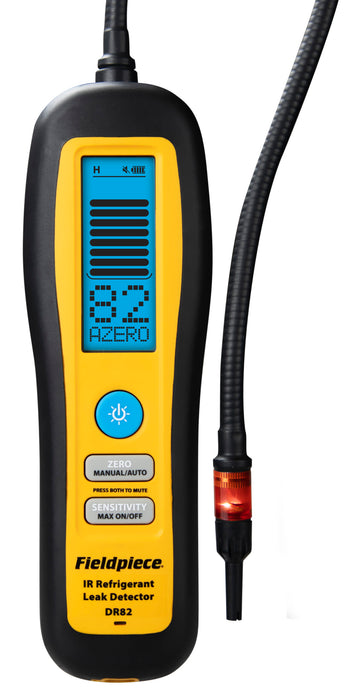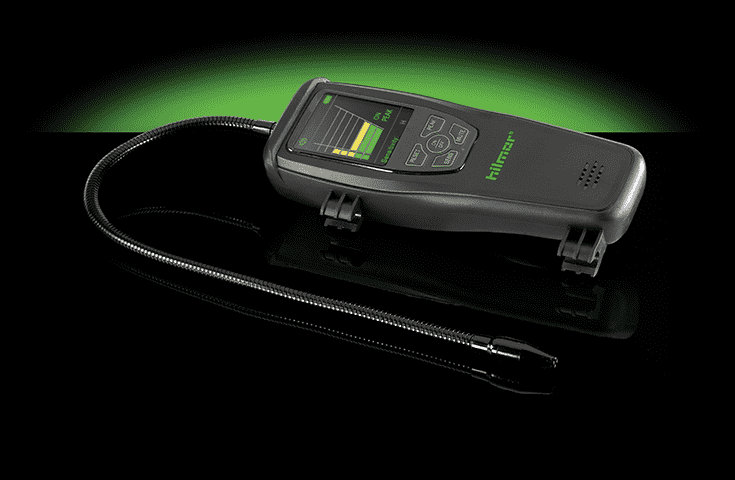HVAC Tools: The Best Refrigerant Leak Detector
Discover the best HVAC refrigerant leak detectors to boost efficiency, prevent costly repairs, and enhance customer satisfaction. Learn about the top heated diode and infrared models for accurate leak detection and explore how advanced HVAC tools can transform your HVAC business.
by Amelia Grant
|
Are customer complaints about subpar servicing and the difficulty in identifying refrigerant leak causing headaches in your HVAC business? The impact of undetected refrigerant leak goes beyond customer dissatisfaction—it directly affects your bottom line. In this article, we'll explore the pains associated with equipment damage and the significant role that advanced refrigerant leak detection plays in preserving profits and ensuring customer satisfaction.
The Costly Pains of Undetected Refrigerant Leak:
Financial Implications:
Undetected refrigerant leak can lead to a domino effect of financial repercussions. The rising prices of R-22 and R-410A make it imperative to identify and address leaks promptly. Leaks that go unnoticed result in continuous refrigerant loss, leading to increased operational costs and potential damage to the HVAC system. According to industry reports, unresolved refrigerant leak can lead to a significant annual loss in revenue for HVAC businesses. On average, companies experience a 15% reduction in profits due to undetected leaks, increased service callbacks, and added repair costs.
Unnecessary Part Replacements:
The inability to pinpoint refrigerant leak accurately can lead to replacing parts or even entire systems unnecessarily. This not only incurs additional costs for your business but also contributes to customer dissatisfaction. Imagine the frustration of customers who pay for replacements that could have been avoided with effective refrigerant leakage and detection.
Callbacks and Customer Loyalty:
Customer complaints and callbacks due to unresolved issues are detrimental to the reputation of your HVAC business. The frustration experienced by customers when issues persist erodes their trust in your services. This lack of trust can result in the loss of long-term customers and negative word-of-mouth, further impacting your profits.
Sing of Refrigerant Leak
A key sign that a refrigerant leak may be present in your cooling unit is the appearance of water dripping from the wall cooling unit. This water can accumulate due to ice buildup on the evaporator coil caused by low refrigerant levels, which then melts and drips as it warms up.
It's essential to be aware that the leaking water itself is not typically dangerous to humans. However, a refrigerant leak can lead to a range of issues. For instance, inhaling refrigerant gases may cause health risks such as dizziness, headaches, and respiratory irritation. Moreover, a low refrigerant level can strain your AC system, leading to reduced efficiency and potentially costly repairs if left unaddressed. If you notice any of these signs, it's wise use refrigerant leak detector immediately to repair the HVAC.
Unveiling the Environmental Impact: 4% of Global Greenhouse Gas Emissions Linked to Air Conditioning
Did you know that a staggering 4% of global greenhouse gas emissions, equivalent to a colossal 1.95 billion tons of carbon dioxide annually, can be attributed to air conditioning? This significant environmental impact stems from various sources, with an alarming 820 million tons contributing to greenhouse gas emissions due to refrigerant leakage, equipment manufacturing, and transportation.
Seizing the Opportunity: Transforming 820 Million Tons into HVAC Business Prosperity!
Faced with the substantial challenge posed by 820 million tons of greenhouse gas emissions in the air conditioning sector, forward-thinking HVAC companies now have a unique opportunity. This challenge can be turned into a chance not only to positively impact the environment but also to fortify their business.
The HVAC Tool Solution: Advanced Refrigerant Leak Detection Technologies
Choosing the Right Refrigerant Leak Detector: Heated Diode vs. Infrared
Every HVAC/R technician understands the critical importance of electronic leak detectors in today's industry, especially with the prevalence of low-GWP HFC and HFO refrigerants. In this article, we'll delve into two prominent types of refrigerant leak detector - Heated Diode and Infrared - and explore notable models from three reputable brands for each category.
Heated Diode Refrigerant Leak Detectors:
Best Overall | Best Value | Honorable Mention |
 |  |  |
Fieldpiece DR58 $332.35 | Hilmor LDHD250 $209.38 | Bacharach H10 $630.00
|
|
|
|
Advantages:
- Pinpoint accuracy for locating refrigerant leak.
- High sensitivity for detecting even the smallest refrigerant leaks.
- Intuitive motion for ease of use.
Disadvantages:
- Prone to false positives from other substances.
- Sensors susceptible to fouling from moisture and oil.
- Periodic sensor replacements required.
Infrared Refrigerant Leak Detectors:
Best Overall | Best Value | Honorable Mention |
 |  | |
Fieldpiece DR82 $476.85 | Hilmor LDHD150 $347.51 | INFICON D-TEK Stratus $1,024.99 |
|
|
|
Advantages:
- Longer-lasting sensors compared to heated diode refrigerant detectors.
- Less susceptible to false positives from various gasses.
- Good sensitivity, though slightly less than the most sensitive heated diode models.
Disadvantages:
- Continuous movement required for proper functionality.
- Challenges in pinpointing leaks due to constant recalibration.
Choosing the Right Refrigerant Leak Detector: Matching HVAC Tools to Scenarios
1. Routine Commercial HVAC Preventative Maintenance: Heated Diode Leak Detectors
When conducting routine commercial HVAC preventative maintenance where the presence of refrigerants needs confirmation, heated diode leak detectors excel. Their sensitivity and accuracy make them ideal for detecting small leaks, ensuring comprehensive system checks.
2. Suspected Larger Refrigerant Leaks: Infrared Leak Detectors
In scenarios where contractors suspect larger refrigerant leaks or need to cover broader areas efficiently, infrared leak detectors are the preferred choice. Their ability to detect refrigerant leak at a slightly larger scale and navigate diverse environments makes them suitable for comprehensive assessments.
3. Compact Spaces: Heated Diode Leak Detectors
For confined spaces with limited accessibility, heated diode detectors prove advantageous. Their compact size and ease of use make them suitable for maneuvering in tight spots, allowing contractors to identify leaks in challenging locations.
4. Multi-Gas Detection: Infrared Leak Detectors
In situations where contractors need to detect various gasses, including flammables, infrared leak detectors with multi-gas detection capabilities become indispensable. They provide a versatile solution for different HVAC scenarios.
5. Emergency Response: Heated Diode Leak Detectors
In emergency situations demanding quick detection and response, heated diode leak detectors offer rapid and accurate results. Their intuitive motion and instant alerts make them invaluable for urgent leak identification and resolution.
By considering these scenarios and aligning them with the specific features of heated diode and infrared leak detectors, contractors can make informed decisions based on the unique needs of each HVAC situation. Whether it's routine inspections, suspected larger refrigerant leak, compact spaces, multi-gas detection, or emergency response, having the right tool for the job ensures efficient and effective leak detection.
Considerations for Both Types:
Quality brands typically range from $250 to $700.
- Thoroughly research technology and sensitivity specifications.
- Expect occasional sensor and filter changes as per the manufacturer's guidelines.
Unlock HVAC Excellence for Free!
Elevate your business with Gobuid - Equipment tracking and health monitoring all at no cost! Why settle for less when you can revolutionize your operations without spending a dime?
🚀 Try Gobuid today and unleash the power of innovation. Don't miss out—transform your HVAC business for free! Catch the wave of success with Gobuid—it's not just software; it's your key to a brighter future! 🌟
Choosing between heated diode and infrared leak detectors depends on various factors, including the specific requirements of the HVAC/R job and personal preferences. By understanding the advantages, disadvantages, and considerations for each type, technicians can make informed decisions that enhance their refrigerant leak detection accuracy and efficiency. Remember, being well-versed in your chosen leak detector's functionality is key to successful refrigerant leak detection in HVAC systems.
